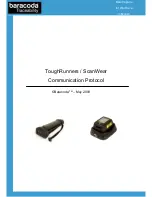
To verify port splitting, use the
show system stack-unit
stack—unit—number
fanout {count | configure}
command
•
The quad port must be in a default configuration before you can split it into 4x10G ports. The 40G port is lost in the configuration when
the port is split; be sure that the port is also removed from other L2/L3 feature configurations.
•
The system must be reloaded after issuing the CLI for the change to take effect.
Converting a QSFP or QSFP+ Port to an SFP or SFP+
Port
You can convert a QSFP or QSFP+ port to an SFP or SFP+ port using the Quad to Small Form Factor Pluggable Adapter (QSA).
QSA provides smooth connectivity between devices that use Quad Lane Ports (such as the 40 Gigabit Ethernet adapters) and 10 Gigabit
hardware that uses SFP+ based cabling. Using this adapter, you can effectively use a QSFP or QSFP+ module to connect to a lower-end
switch or server that uses an SFP or SFP+ based module.
When connected to a QSFP or QSFP+ port on a 40 Gigabit adapter, QSA acts as an interface for the SFP or SFP+ cables. This interface
enables you to directly plug in an SFP or SFP+ cable originating at a 10 Gigabit Ethernet port on a switch or server.
You can use QSFP optical cables (without a QSA) to split a 40 Gigabit port on a switch or a server into four 10 Gigabit ports. To split the
ports, enable the fan-out mode.
Similarly, you can enable the fan-out mode to configure the QSFP port on a device to act as an SFP or SFP+ port. As the QSA enables a
QSFP or QSFP+ port to be used as an SFP or SFP+ port, Dell Networking OS does not immediately detect the QSA after you insert it into
a QSFP port cage.
After you insert an SFP or SFP+ cable into a QSA connected to a 40 Gigabit port, Dell Networking OS assumes that all the four fanned-out
10 Gigabit ports have plugged-in SFP or SFP+ optical cables. However, the link UP event happens only for the first 10 Gigabit port and you
can use only that port for data transfer. As a result, only the first fanned-out port is identified as the active 10 Gigabit port with a speed of
10G or 1G depending on whether you insert an SFP+ or SFP cable respectively.
NOTE:
Although it is possible to configure the remaining three 10 Gigabit ports, the Link UP event does not occur for these ports
leaving the lanes unusable. Dell Networking OS perceives these ports to be in a Link Down state. You must not try to use these
remaining three 10 Gigabit ports for actual data transfer or for any other related configurations.
If you use an active optical cable (AOC), you can convert the QSFP+ port to a 10 Gigabit SFP+ port or 1 Gigabit SFP port. Use the speed
command to enable the required speed.
Important Points to Remember
•
Before using the QSA to convert a 40 Gigabit Ethernet port to a 10 Gigabit SFP or SFP+ port, enable 40 G to 4*10 fan-out mode on
the device.
•
When you insert a QSA into a 40 Gigabit port, you can use only the first 10 Gigabit port in the fan-out mode to plug-in SFP or SFP+
cables. The remaining three 10 Gigabit ports are perceived to be in Link Down state and are unusable.
•
You cannot use QSFP Optical cables on the same port where QSA is used.
•
When you remove the QSA module alone from a 40 Gigabit port, without connecting any SFP or SFP+ cables; Dell Networking OS
does not generate any event. However, when you remove a QSA module that has SFP or SFP+ optical cables plugged in, Dell
Networking OS generates an SFP or SFP+ Removed event.
Example Scenarios
Consider the following scenarios:
418
Interfaces
Summary of Contents for S4048T-ON
Page 1: ...Dell Configuration Guide for the S4048 ON System 9 11 2 1 ...
Page 148: ...Figure 10 BFD Three Way Handshake State Changes 148 Bidirectional Forwarding Detection BFD ...
Page 251: ...Dell Control Plane Policing CoPP 251 ...
Page 363: ... RPM Synchronization GARP VLAN Registration Protocol GVRP 363 ...
Page 511: ...Figure 64 Inspecting the LAG Configuration Link Aggregation Control Protocol LACP 511 ...
Page 558: ...Figure 84 Configuring Interfaces for MSDP 558 Multicast Source Discovery Protocol MSDP ...
Page 559: ...Figure 85 Configuring OSPF and BGP for MSDP Multicast Source Discovery Protocol MSDP 559 ...
Page 564: ...Figure 88 MSDP Default Peer Scenario 2 564 Multicast Source Discovery Protocol MSDP ...
Page 565: ...Figure 89 MSDP Default Peer Scenario 3 Multicast Source Discovery Protocol MSDP 565 ...
Page 841: ...Figure 115 Single and Double Tag TPID Match Service Provider Bridging 841 ...
Page 842: ...Figure 116 Single and Double Tag First byte TPID Match 842 Service Provider Bridging ...













































